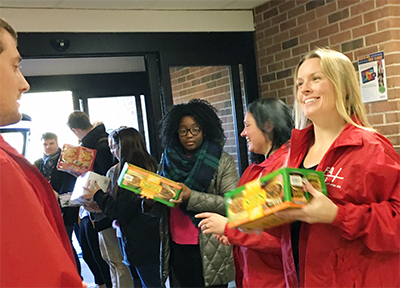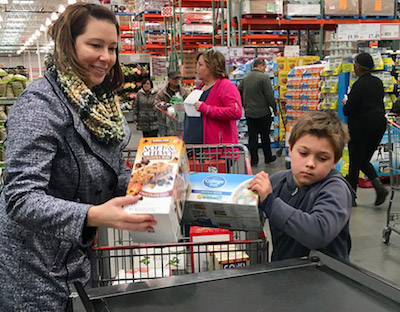Cynthia Eaton
College students have plenty of reasons to feel insecure: being in a new environment that demands higher levels of self-regulatory behavior, mastering time management and study skills, establishing new friendships, studying for various classes and balancing the demands of their on-campus and off-campus obligations. This is why the FA donates to the three campus food pantries every year. This semester, in particular, FA efforts have resulted in $3,000 going to our three campus food pantries. Defining the problem Food insecurity was redefined in 2006 by the USDA: "Low food insecurity" refers to reduced quality, variety or desirability of diet with little or no indication of reduced food intake, while "very low food insecurity" refers to multiple indications of disrupted eating patterns with reduced food intake.
Given this definition, we can see that the problem with food insecurity among community college students is its prevalence and its academic impacts.
All too common Given worsening economic conditions and declining funding for public colleges, two recent national studies aimed to measure food insecurity among college students, including those enrolled at community colleges. In winter and spring 2015, the Wisconsin HOPE Lab led a study of 4,312 students attending ten community colleges—including SUNY Onondaga Community College in Syracuse, which is analyzed in "Hungry to Learn: Addressing Food & Housing Insecurity Among Undergraduates." Here are some key findings:
A year later, in spring 2016, the College and University Food Bank Alliance (CUFBA) led a survey of 3,765 students in twelve states attending eight community colleges and 26 four-year colleges and universities. Their findings echo that of the HOPE Lab study:
There hasn't yet been a study at SCCC about food insecurity on our campuses, but Newsday reported in 2015 that in addition to property taxes being quadruple the national median, these are the statistics for how much more expensive Long Island is compared to the rest of the nation:
The stomach-brain connection
The prevalence of food insecurity among our students is not only worrisome in itself but also due to its impact on their academic experience. A 2015 study in the Community College Journal of Research and Practice, "Food Insecurity Among Community College Students: Prevalence and Association with Grade Point Average," notes that "food insecure students were more likely than food secure students to report a lower GPA (2.0–2.49) versus a higher GPA (3.5–4.0)" and "may have adverse effects on student academic performance." This study involved a small sample (N=301) and focused on two community colleges in Maryland: one in a low-income urban area and one located in an affluent suburban area. Other impacts associated with food insecurity are withdrawals from college. A study published in January 2017 in the American Journal of Health Promotion concludes that "food insecurity among college students is an important public health concern that might have implications for academic performance, retention, and graduation rates." This should be of grave concern to all of us here at SCCC, since several research studies have shown that students of color, students receiving financial aid and students experiencing housing instability are more likely to also suffer food instability. Given SCCC's Achieving the Dream initiative, we should all be working diligently to address the matter of food insecurity among our students. The FA is there. We want our students to feel secure—and to succeed—in every way, and we know that you do too. Contact your campus food pantry coordinator to help:
|


